Abstract
An epidemiological model has been constructed for typhoid fever in a stable population in order to study the transmission of infection at different levels of endemicity. It involves a number of parameters representing the proportions of epidemiological subgroups in the population—such as the susceptible, the infected, and the immune—and rates of transition between the groups. Numerical values based on available evidence were assigned to the parameters, to provide a realistic simulation of stable endemicity.
Changes were then introduced in the values of some of the parameters in order to study the consequences of mass vaccination and improvements in general health conditions and sanitation, in particular on the incidence of disease.
The model shows that a single mass vaccination reduces the incidence of disease considerably, but the gain is largely lost after a few years. Repeated vaccinations at 5-year intervals will produce further decreases in incidence, though the additional gain becomes smaller at each consecutive vaccination.
The model was also used to estimate the possible effect of improvements in sanitation. The incidence decreases to a new level of stability when the transmission of the infection is reduced because of improved sanitation. The effect of sanitation is long-lasting and in this respect gives better results than vaccination.
The simultaneous application of mass vaccination and sanitation gives a cumulative effect, which in some cases tends to be close to the effect of sanitation alone.
The model was used to forecast the probable effect of preventive measures against typhoid fever, such as mass immunization and sanitation programmes, on a selected population in terms of prevention of disease, as well as in terms of relative costs and benefits. It provides a useful guide for the rational use of funds and the facilities to be set aside for typhoid fever control purposes.
Other possible uses of the model are briefly discussed.
The need to adjust the model in relation to specific conditions in the community is stressed, as is the need to readjust it to take into account changes in the pattern of life and the natural history of typhoid fever.
Full text
PDF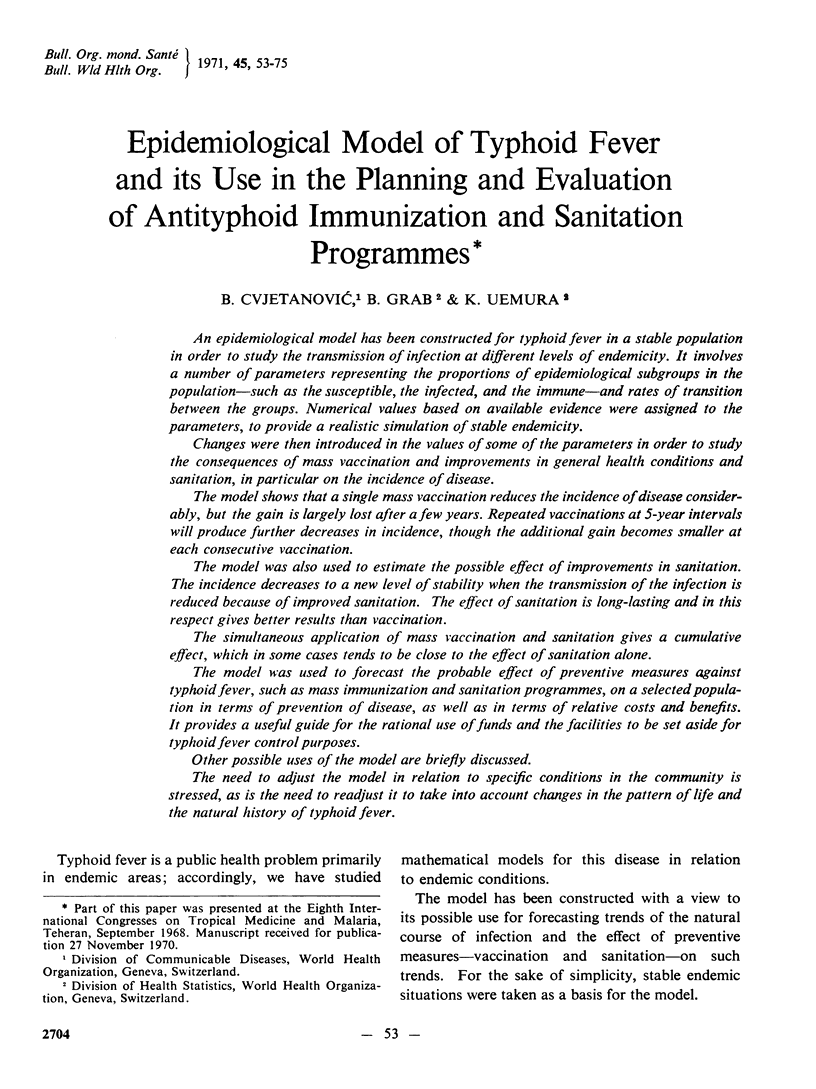
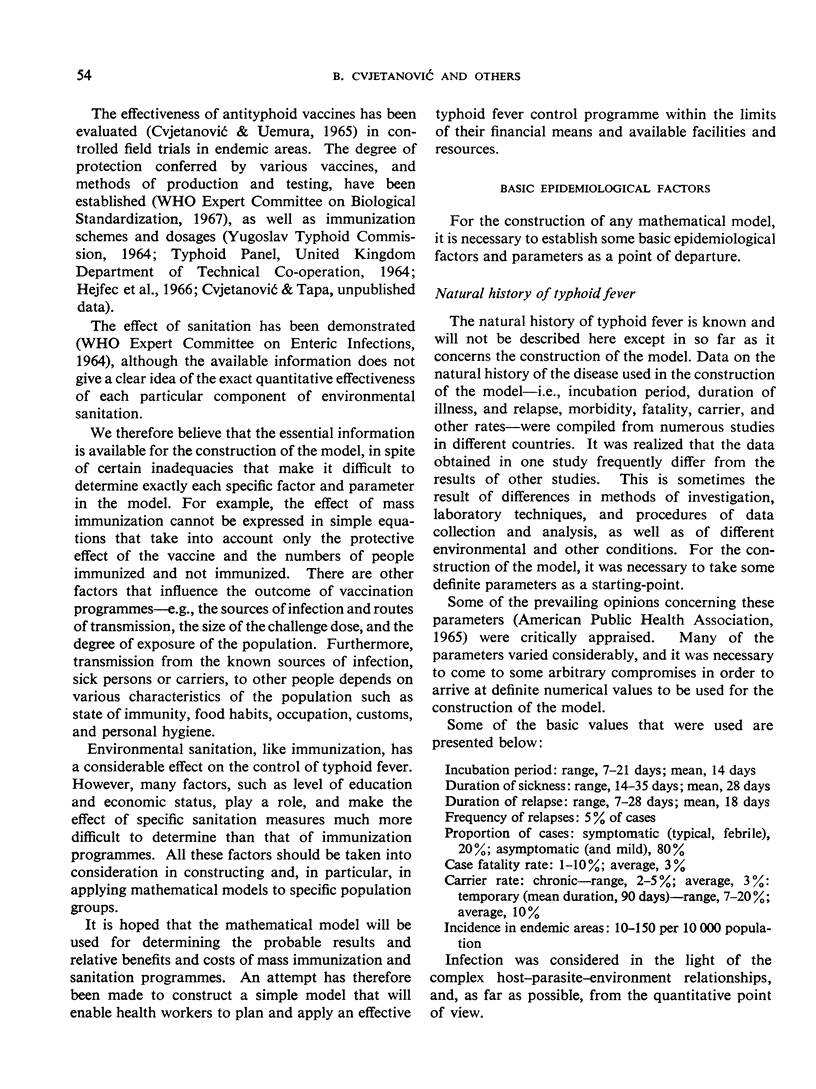
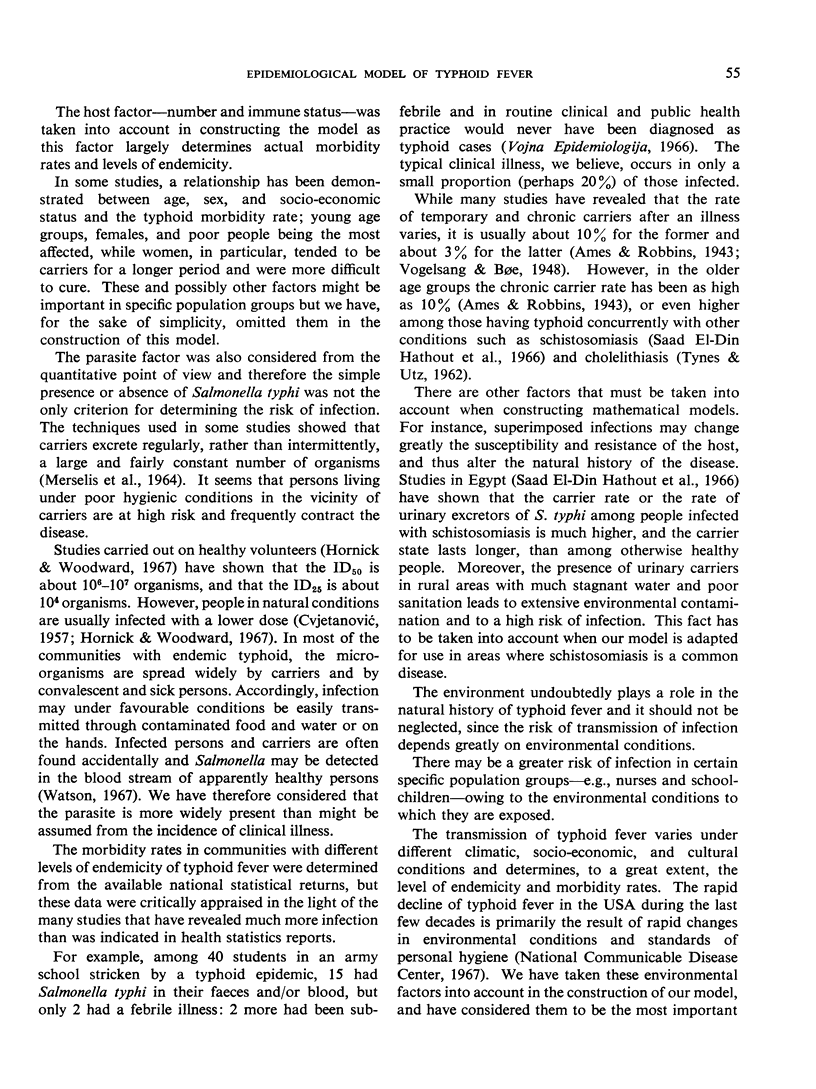
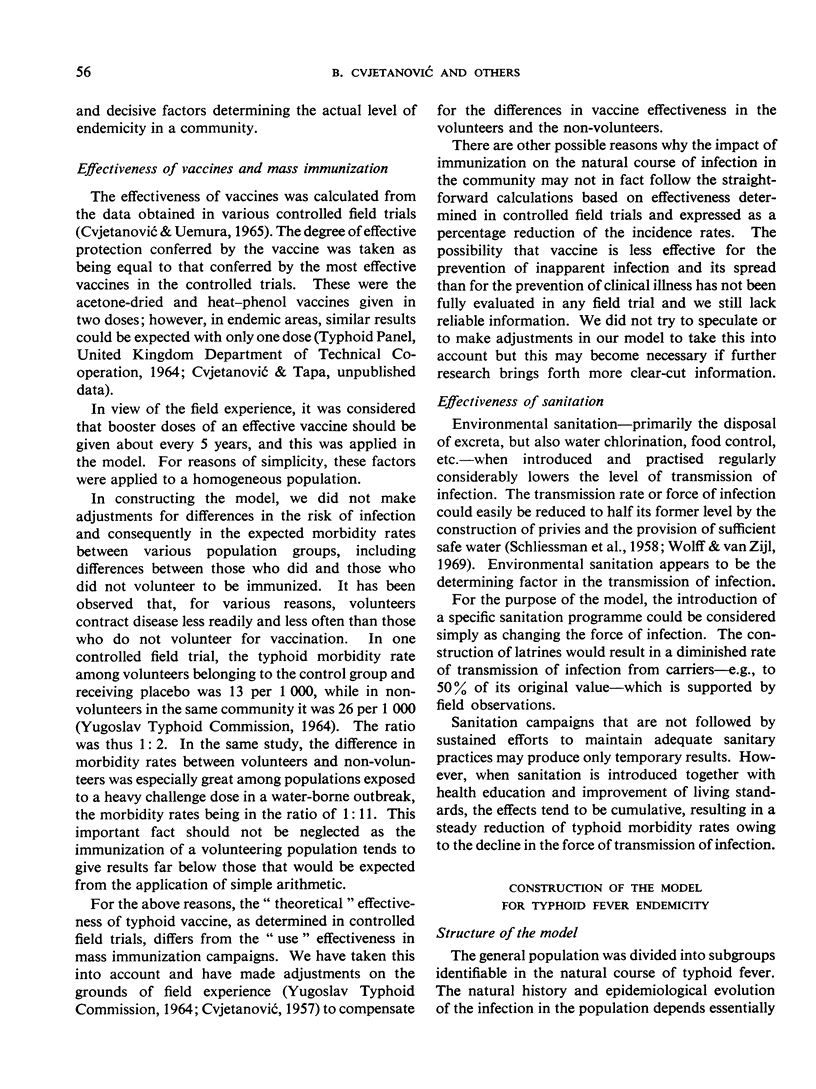
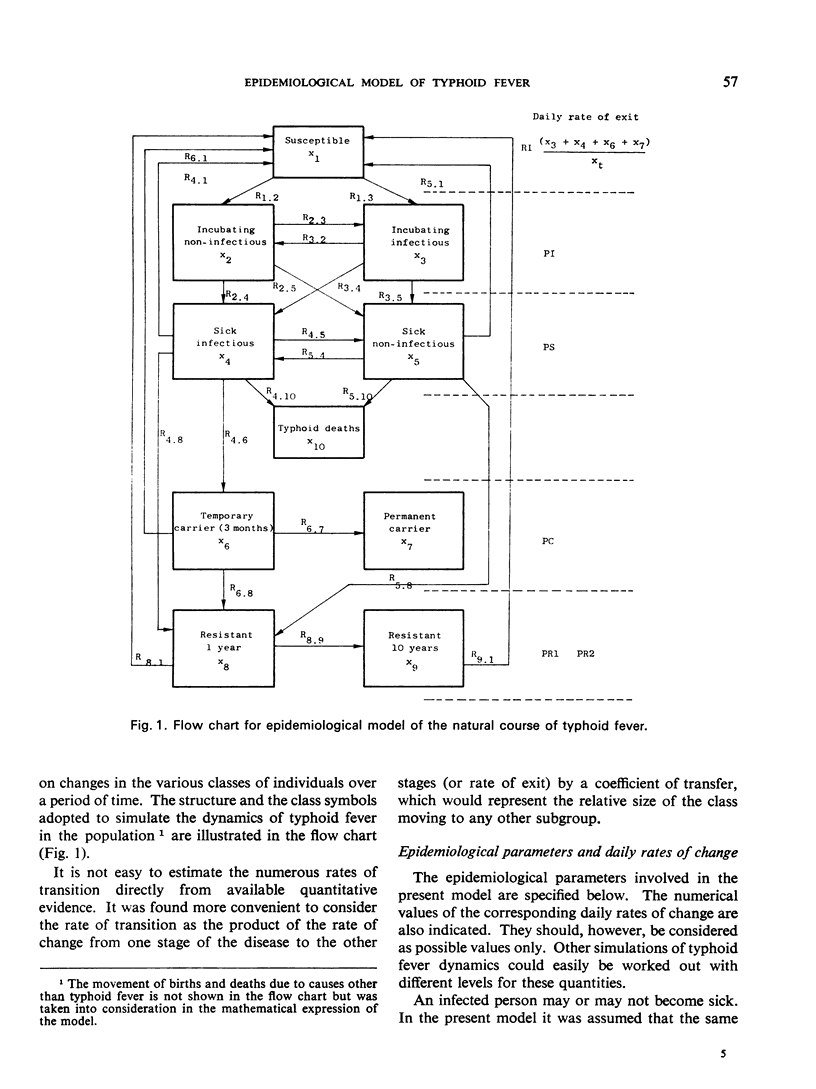
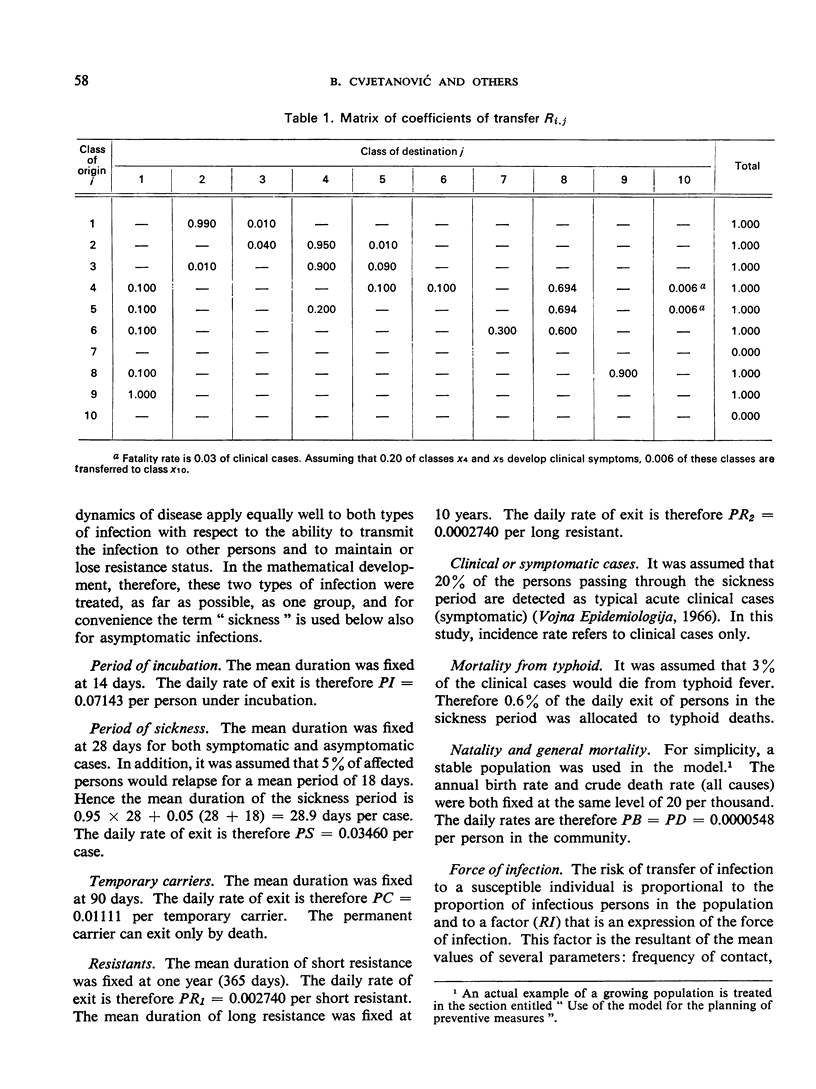
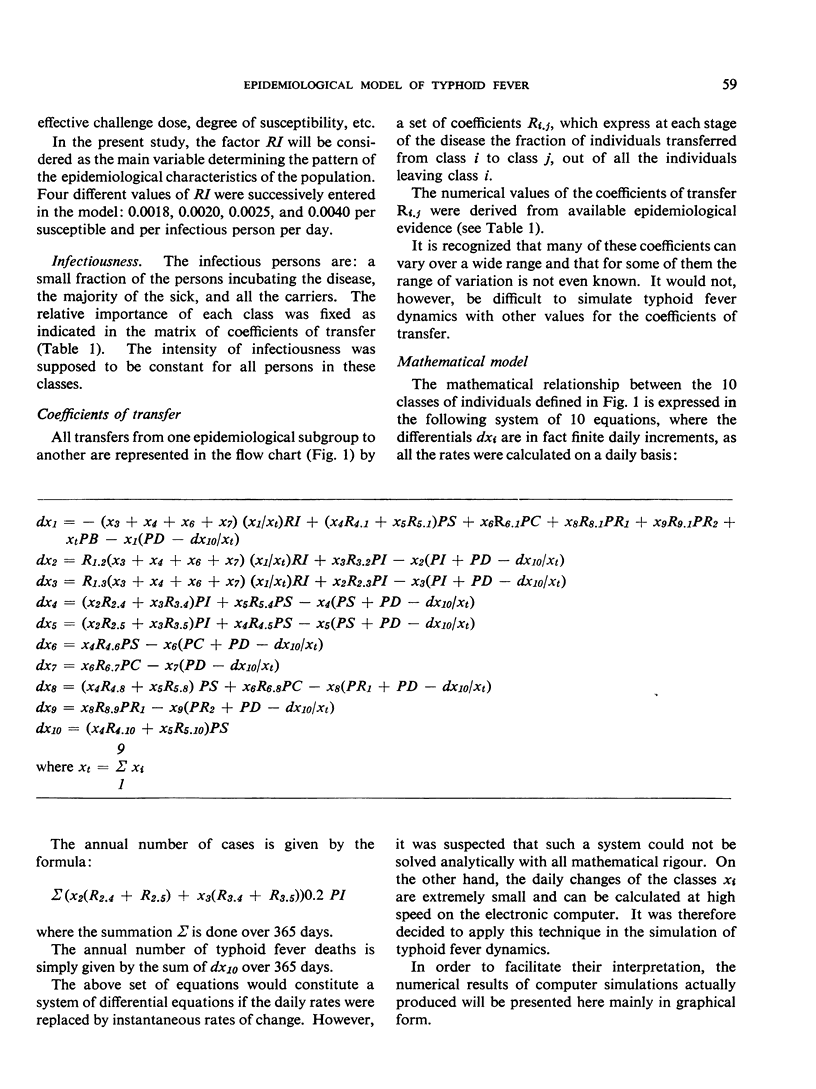
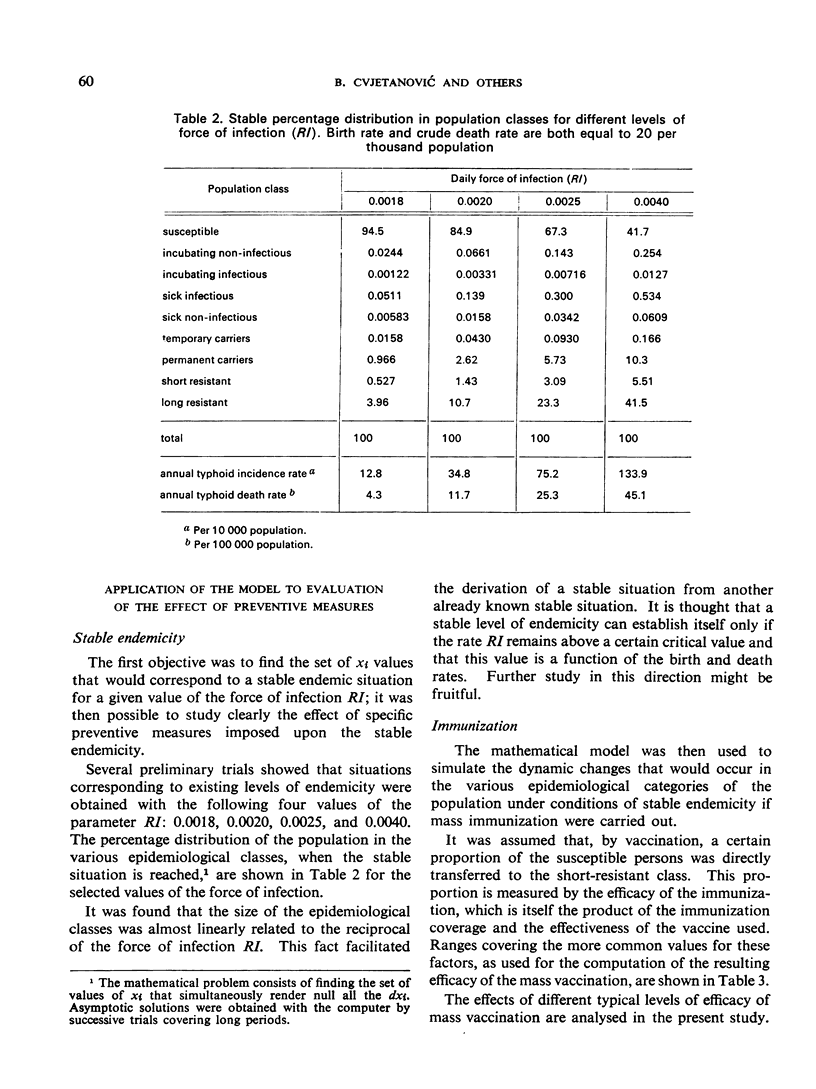
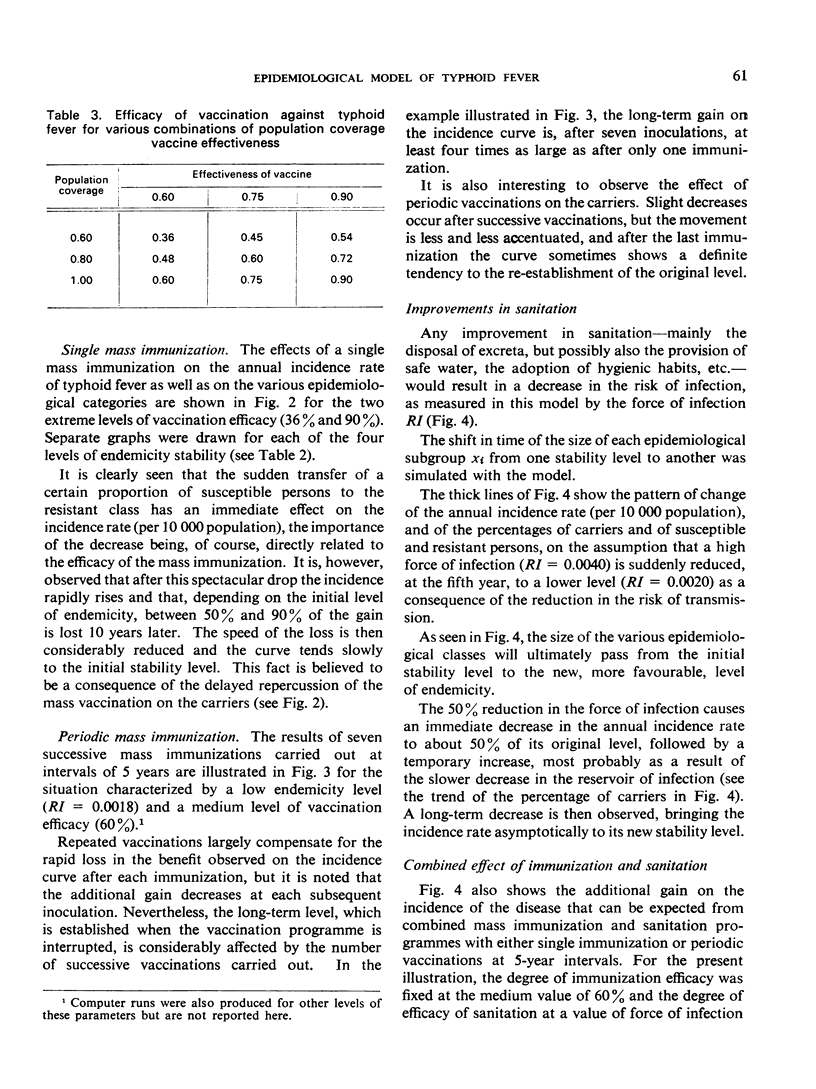
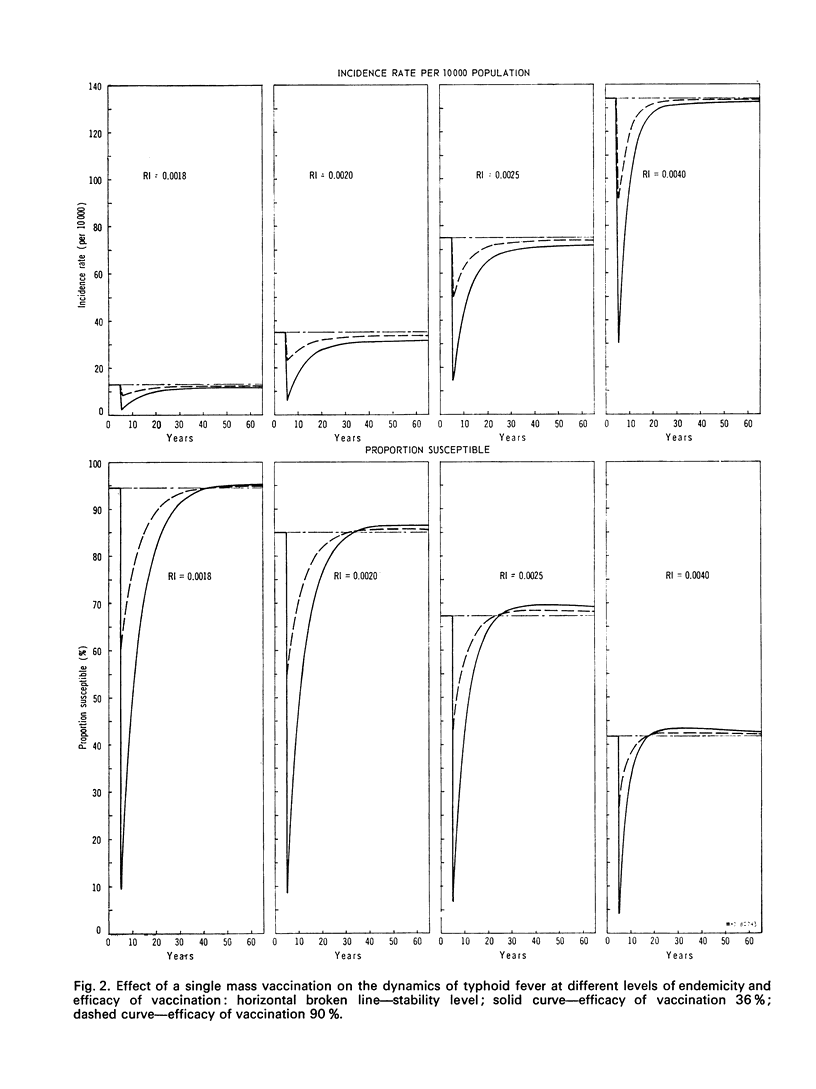
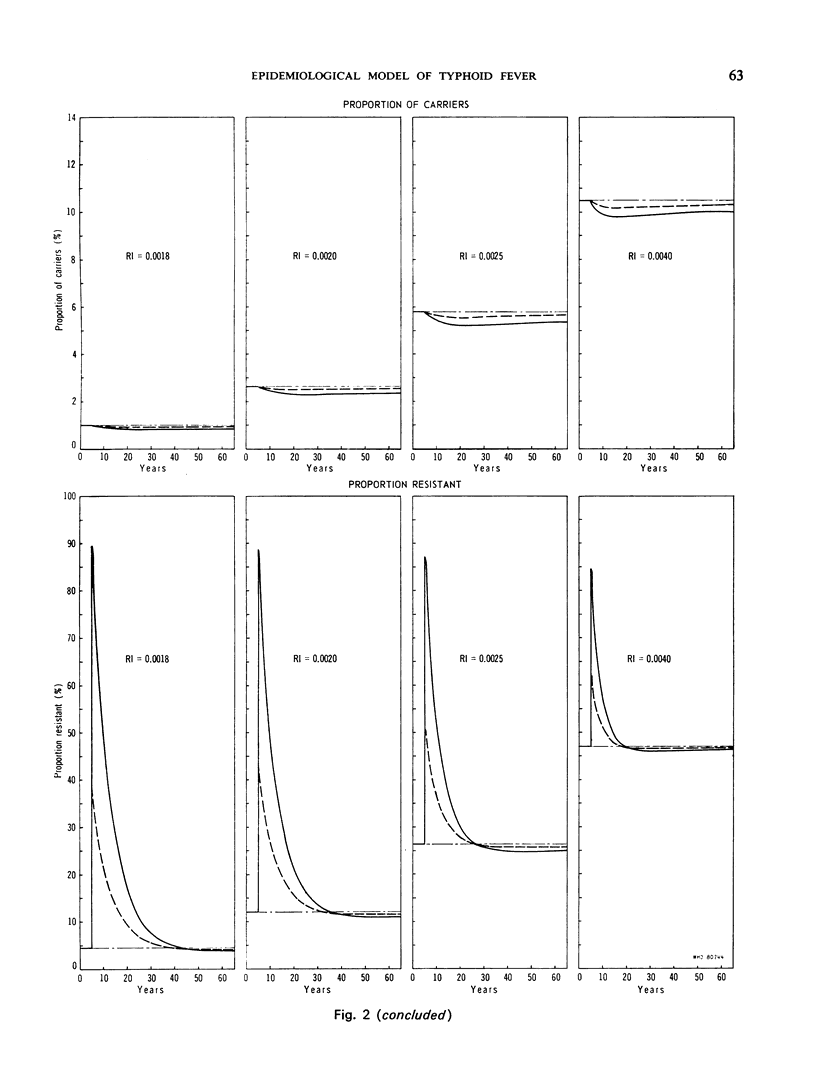
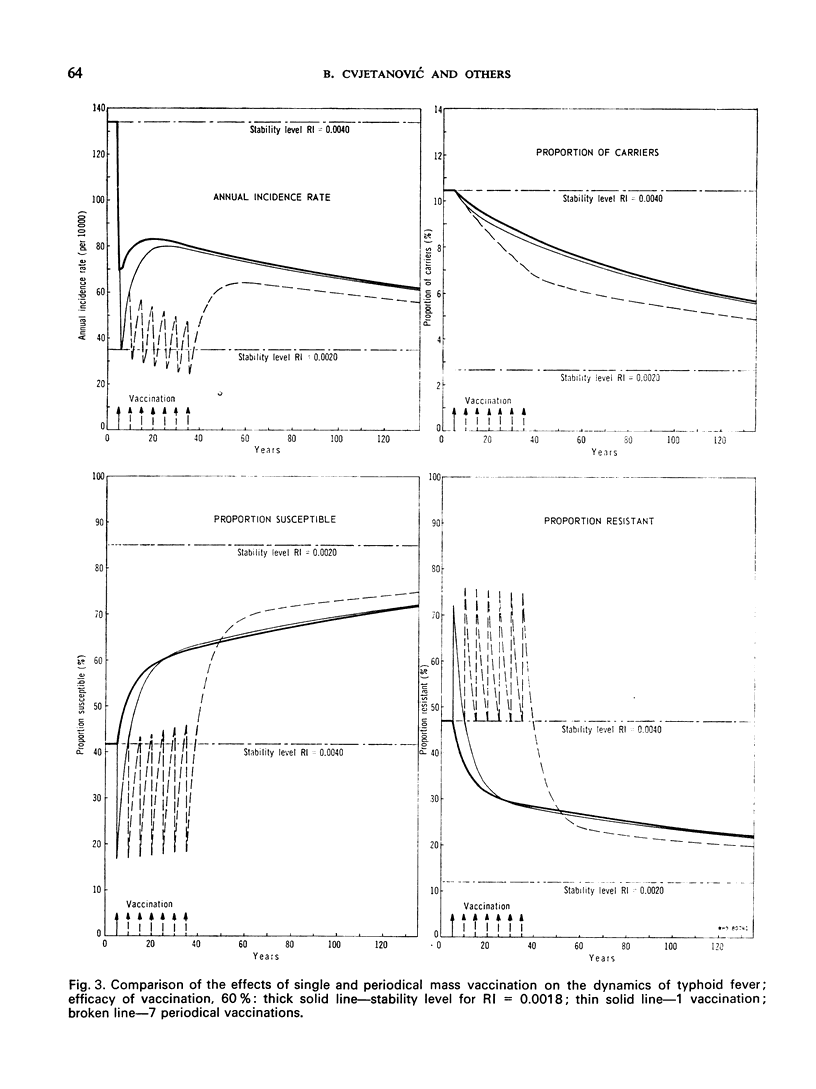
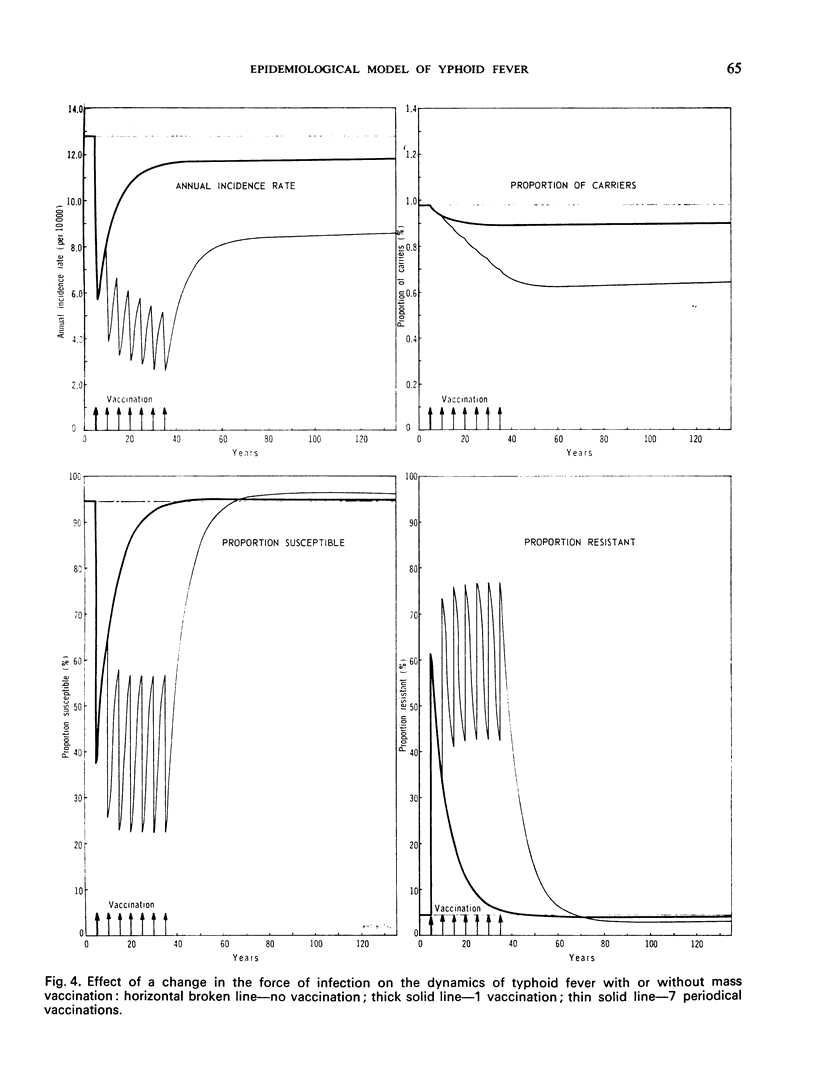
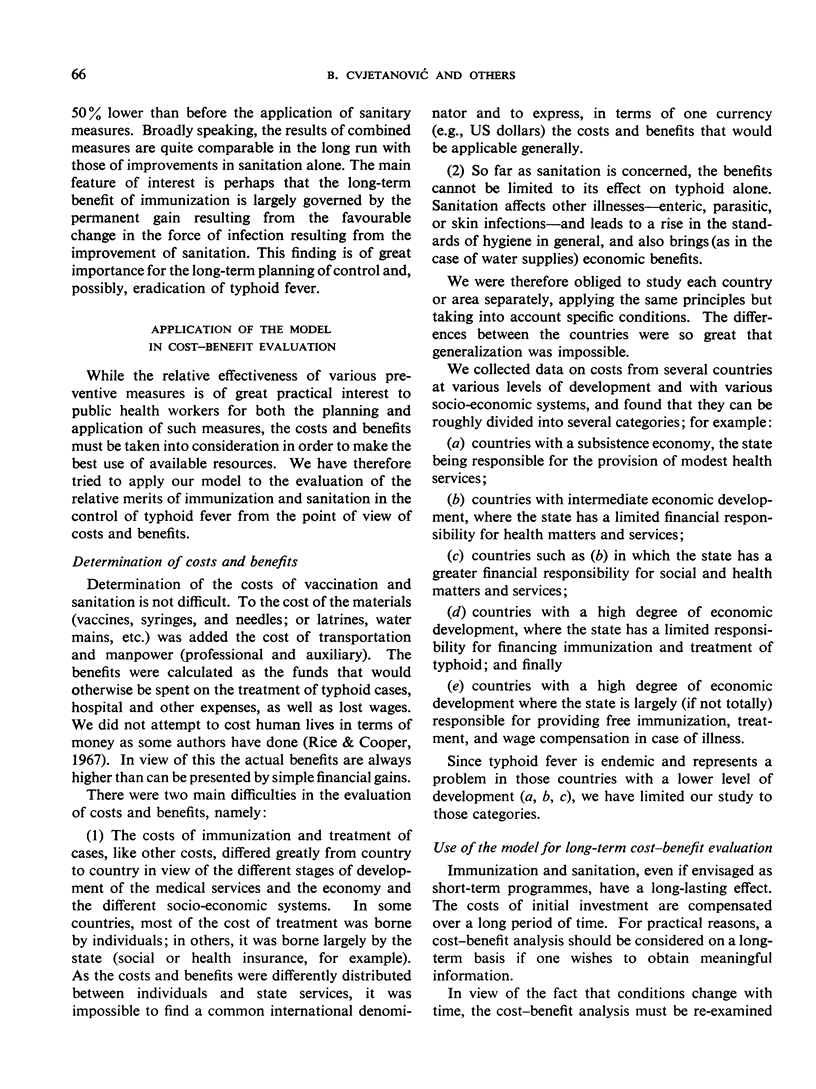
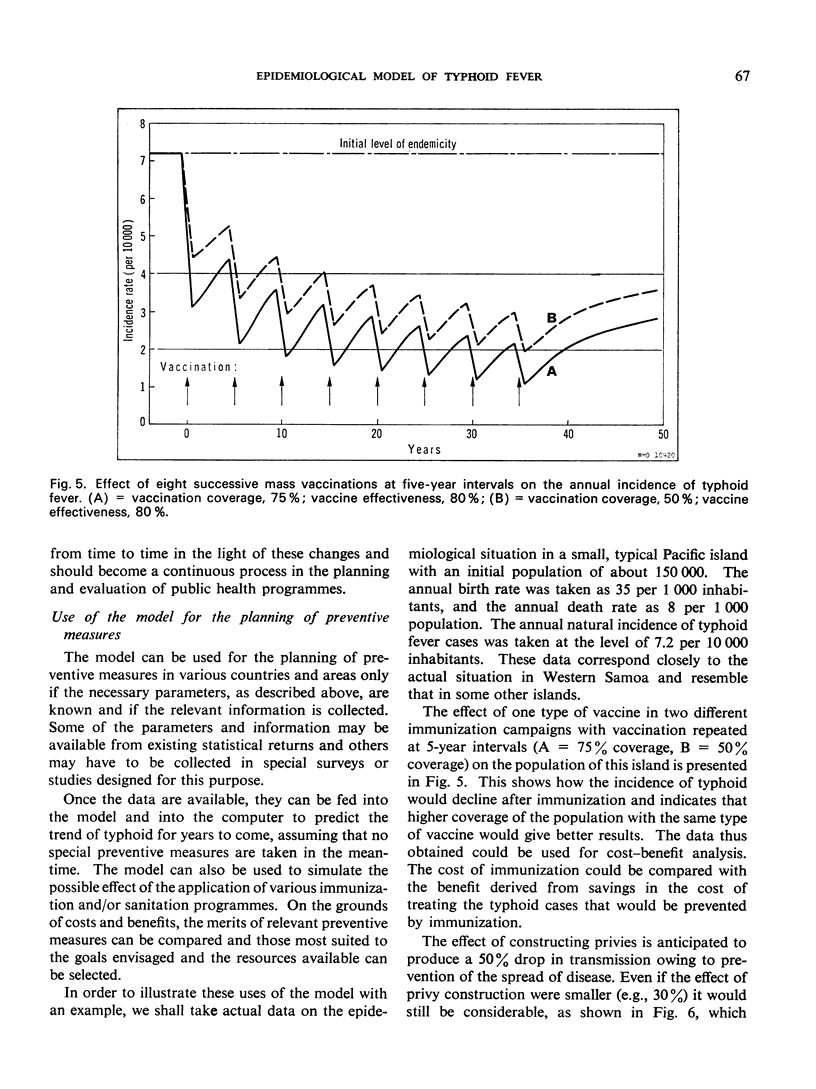
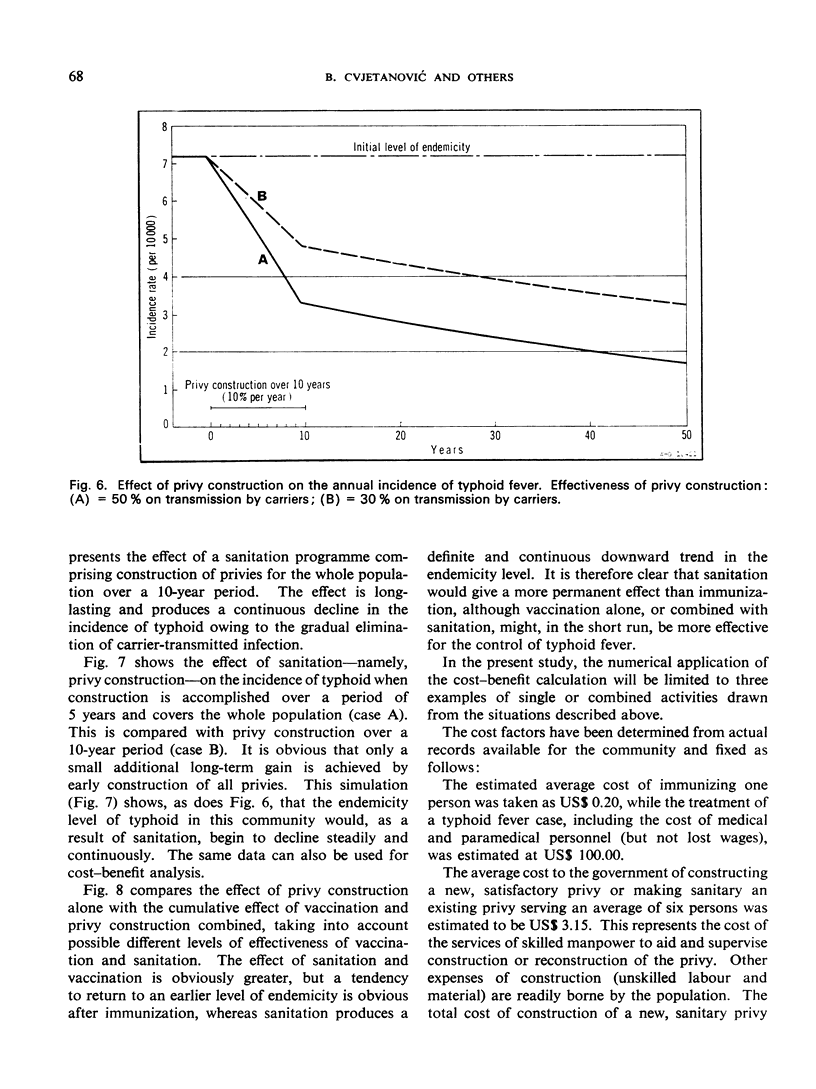
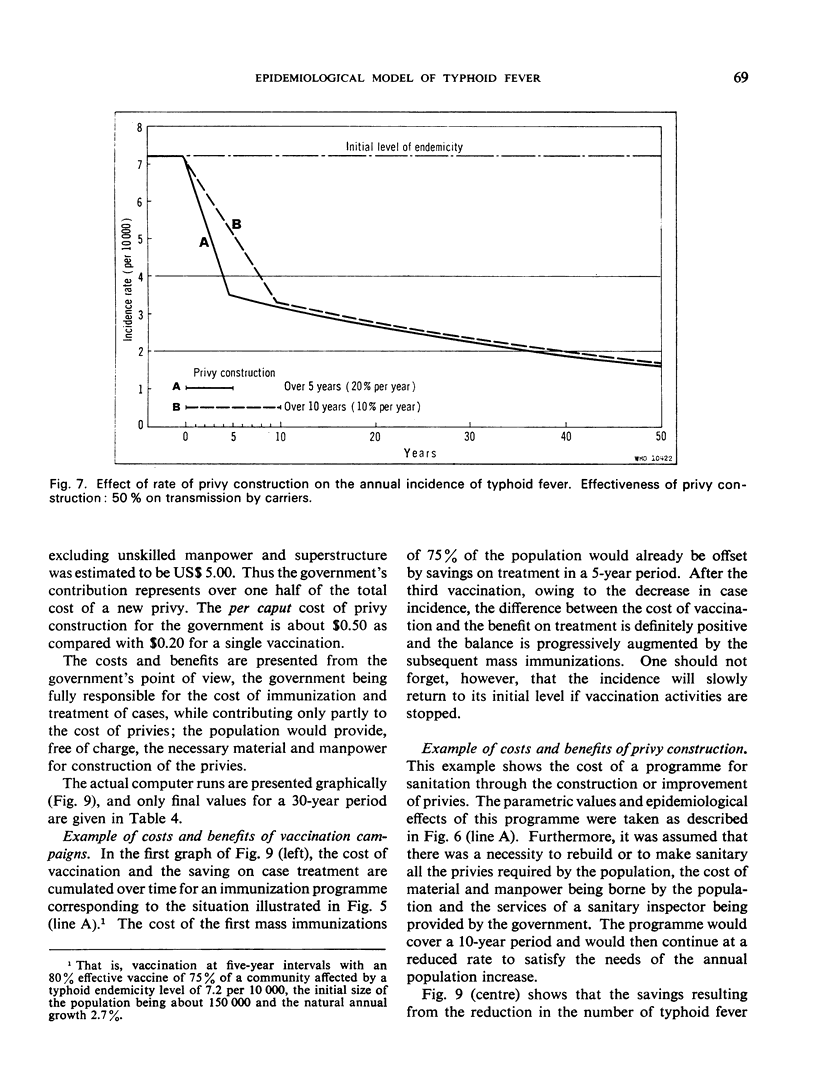
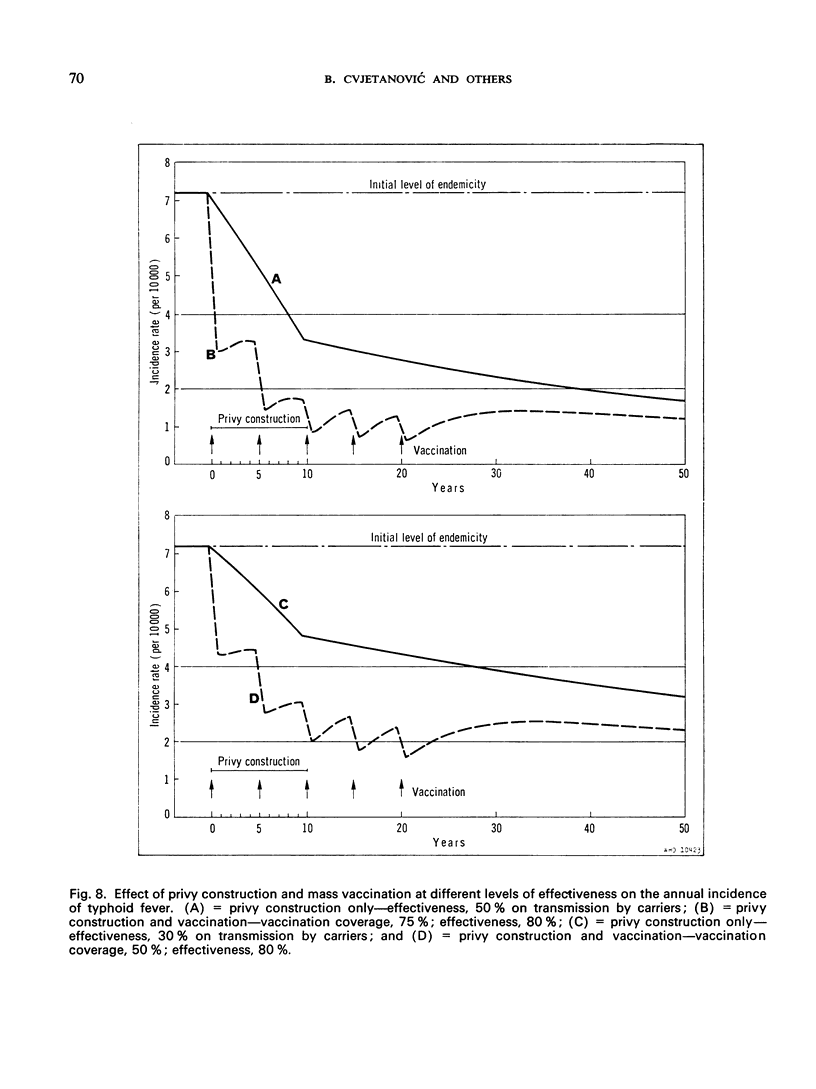
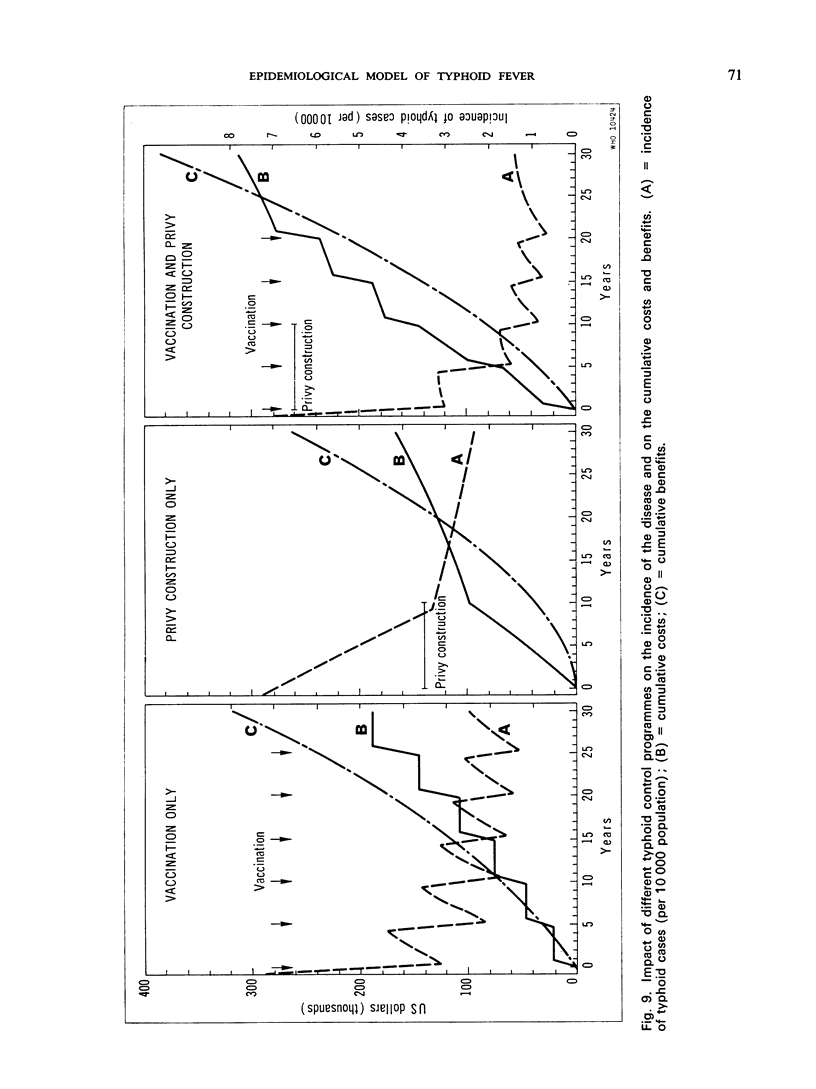
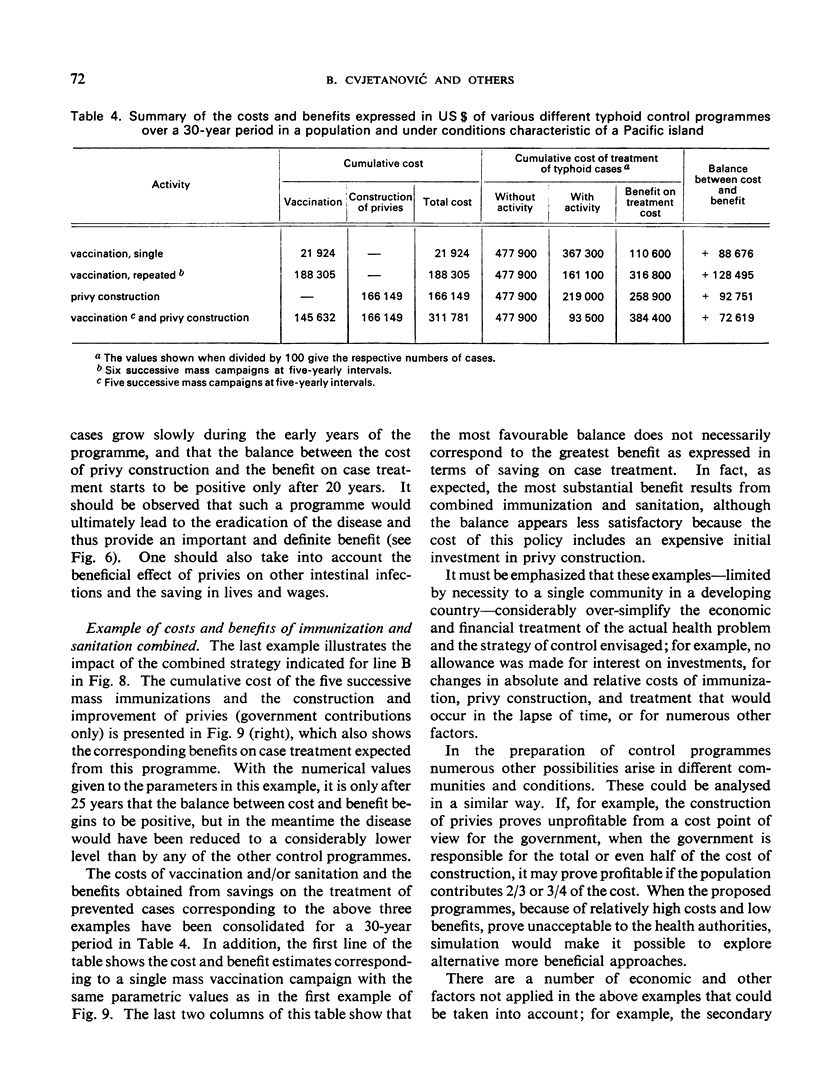
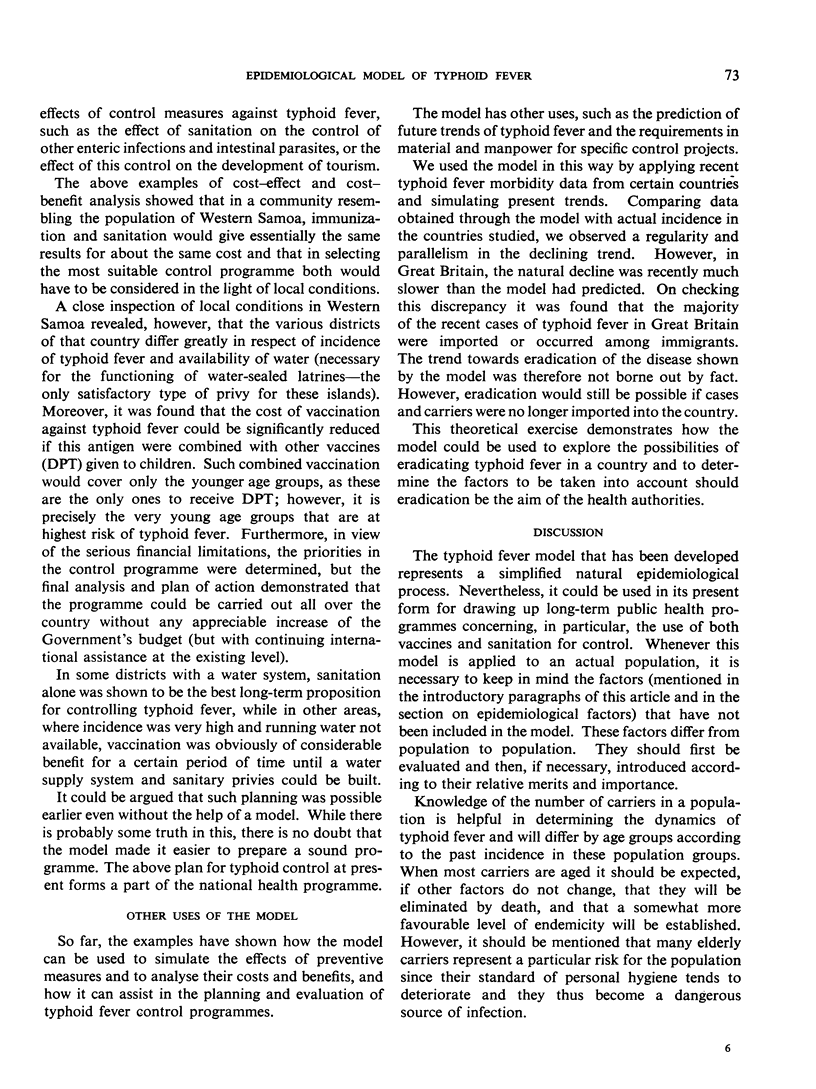
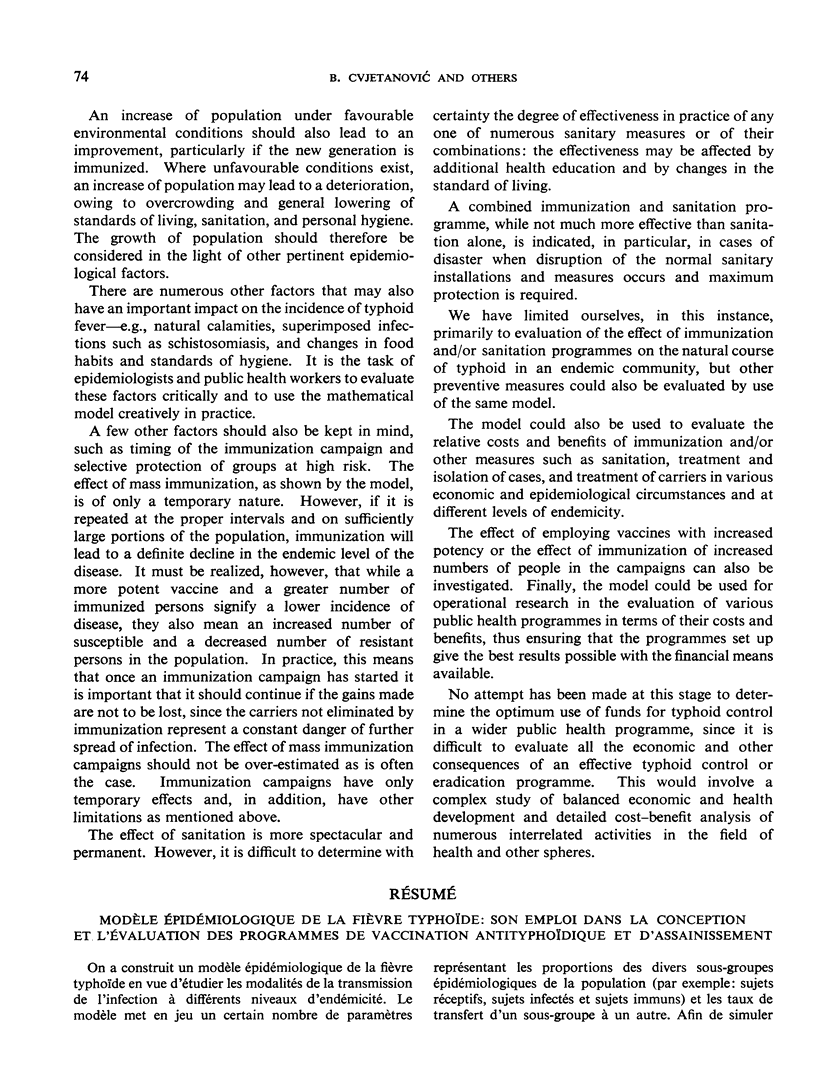
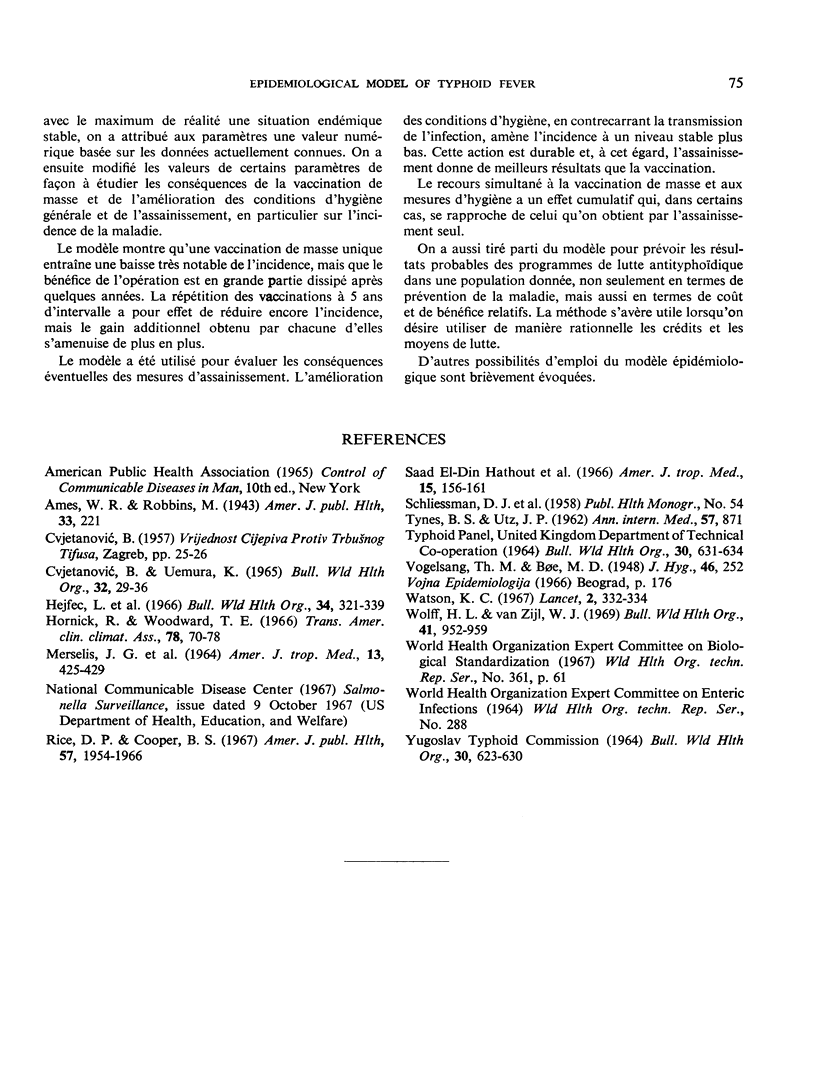
Selected References
These references are in PubMed. This may not be the complete list of references from this article.
- Hathout S el-D, Abd el-Ghaffar Y., Awny A. Y., Hassan K. Relation between urinary schistosomiasis and chronic enteric urinary carrier state among Egyptians. Am J Trop Med Hyg. 1966 Mar;15(2):156–161. doi: 10.4269/ajtmh.1966.15.156. [DOI] [PubMed] [Google Scholar]
- Hejfec L. B., Salmin L. V., Lejtman M. Z., Kuz'minova M. L., Vasil'eva A. V., Levina L. A., Bencianova T. G., Pavlova E. A., Antonova A. A. A controlled field trial and laboratory study of five typhoid vaccines in the USSR. Bull World Health Organ. 1966;34(3):321–339. [PMC free article] [PubMed] [Google Scholar]
- MERSELIS J. G., Jr, KAYE D., CONNOLLY C. S., HOOK E. W. QUANTITATIVE BACTERIOLOGY OF THE TYPHOID CARRIER STATE. Am J Trop Med Hyg. 1964 May;13:425–429. doi: 10.4269/ajtmh.1964.13.425. [DOI] [PubMed] [Google Scholar]
- Rice D. P., Cooper B. S. The economic value of human life. Am J Public Health Nations Health. 1967 Nov;57(11):1954–1966. doi: 10.2105/ajph.57.11.1954. [DOI] [PMC free article] [PubMed] [Google Scholar]
- TYNES B. S., UTZ J. P. Factors influencing the cure of Salmonella carriers. Ann Intern Med. 1962 Dec;57:871–882. doi: 10.7326/0003-4819-57-6-871. [DOI] [PubMed] [Google Scholar]
- VOGELSANG T. M., BØE J. Temporary and chronic carriers of Salmonella typhi and Salmonella paratyphi B. J Hyg (Lond) 1948 Sep;46(3):252–261. doi: 10.1017/s0022172400036378. [DOI] [PMC free article] [PubMed] [Google Scholar]
- Watson K. C. Intravascular Salmonella typhi as a manifestation of the carrier state. Lancet. 1967 Aug 12;2(7511):332–334. doi: 10.1016/s0140-6736(67)90172-9. [DOI] [PubMed] [Google Scholar]
- Wolff H. L., van Zijl W. J. Houseflies, the availability of water, and diarrhoeal diseases. Bull World Health Organ. 1969;41(6):952–959. [PMC free article] [PubMed] [Google Scholar]


